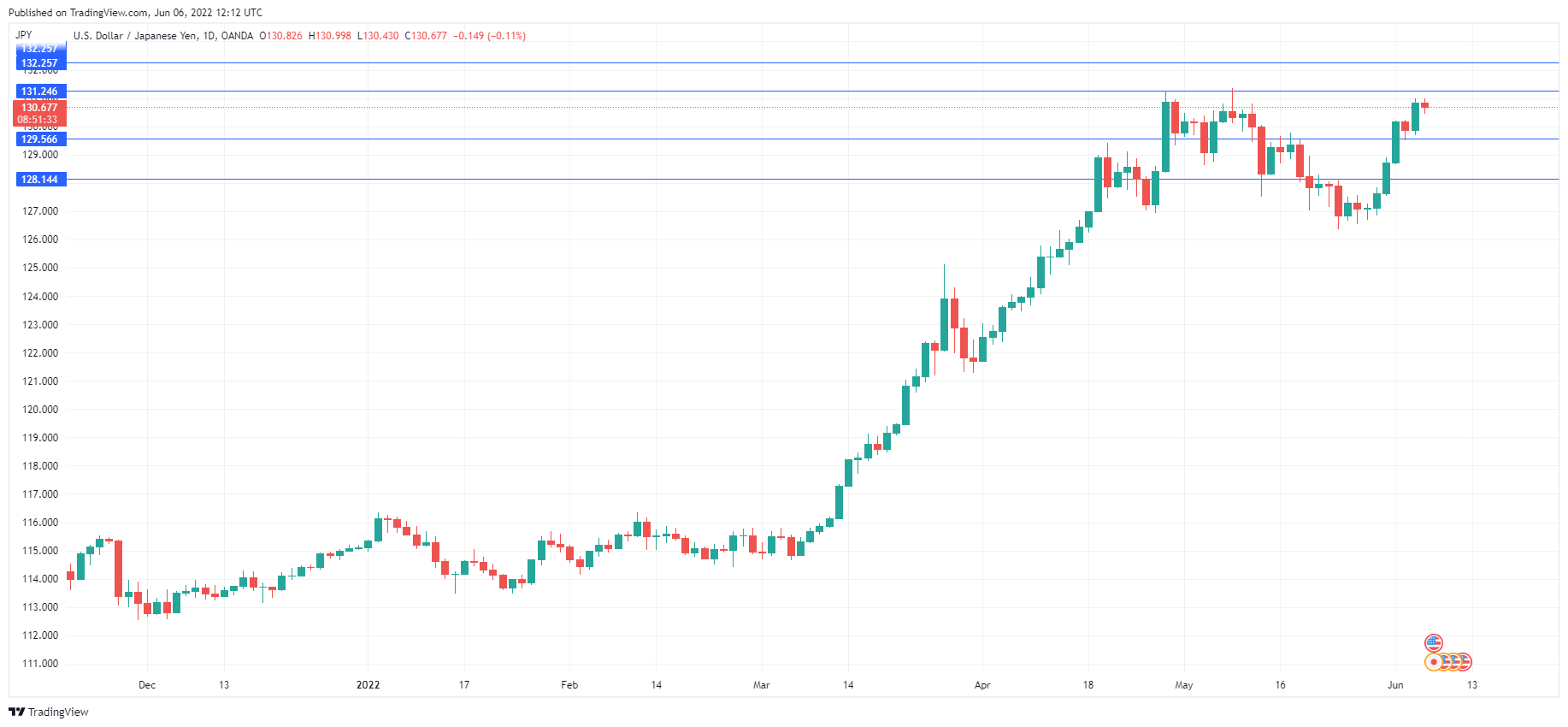The Japanese yen has started the week quietly. In the European session, USD/JPY is trading at 130.63, up 0.15% on the day.
It was a week to forget for the yen, as USD/JPY surged 2.91%, the biggest weekly gain this year. The driver of the yen’s downswing was primarily the rise in US bond yields, which have started the week with gains and are closing in on the 3% level.
US yields climbed on Friday after the May nonfarm payrolls came out stronger than expected. The economy added 390 thousand jobs, above the forecast of 325 thousand and indicating that the labour market remains robust. The report has solidified expectations that the Fed will deliver 50-bps hikes at the June and July meetings.
Ahead of the NFP release, Fed members were sending out hawkish messages to the markets. On Thursday, Fed Vice Chair Brainard said the Fed should not take a break from rate hikes in September, and that the Fed might continue with 50-bps hikes if inflation doesn’t peak. What makes Brainard’s comments noteworthy is that she is considered a leading dove on the Fed, which is indicative of the hawkish pivot the Fed has taken as inflation continues to accelerate. Echoing Brainard, Fed member Mester said that the Fed had to act aggressively to contain inflation and that could mean an increase in September.
BoJ’s Kuroda dismisses tightening
With the Japanese yen declining in health and trading above 130 to the dollar, there has been talk that the BoJ might intervene in order to prop up the currency. BoJ Governor Kuroda poured cold water on any such expectations on Monday, stating that monetary tightening was not “suitable”. Kuroda said that the economy was still recovering from COVID and high commodity prices were adding pressure on the economy. He added that the BoJ would adhere to its ultra-loose policy until the Bank achieved its inflation target of 2%.
With Kuroda doubling down on the Bank’s accommodative policy, the risk for the yen is clearly tilted to the downside, barring a decline in US Treasury yields.
USD/JPY Technical
- USD/JPY faces resistance at 1.3124 and 1.3226
- There is support at 129.56 and 128.14


